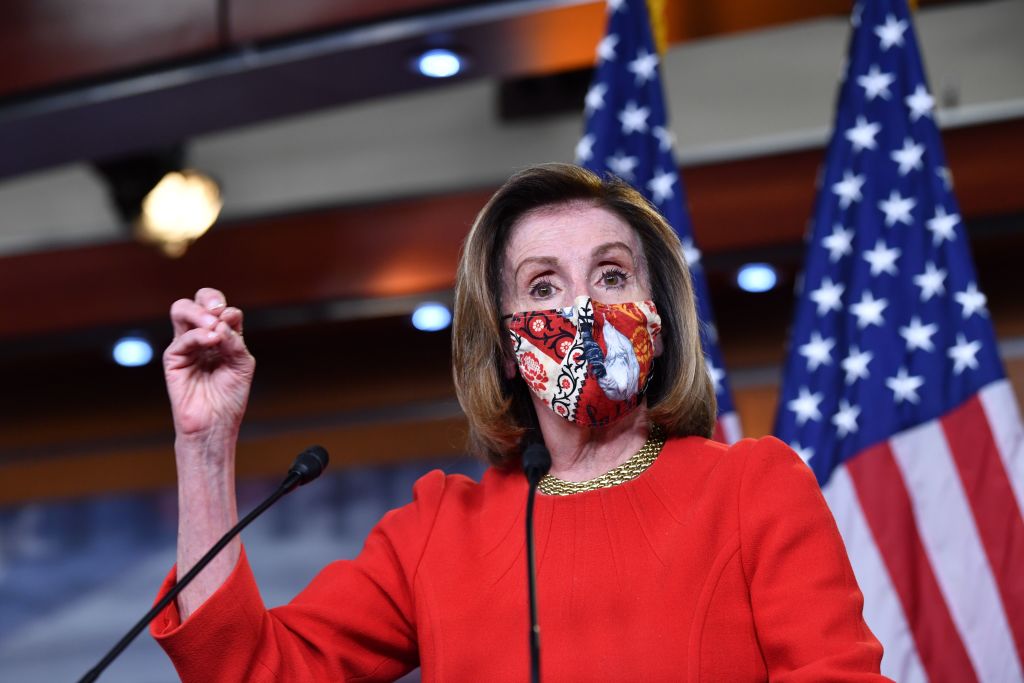It has been months since Congress passed the last COVID-19 relief package, and as DC hurtles toward its Christmas holiday, the prospect of another legislative effort is still bedeviling Capitol Hill.That we are here at all reflects a divergence from the lawmaking consensus that saw three phases of major COVID-19 legislation pass in March — including the $2.2 trillion CARES Act, which constitutes the largest economic response legislation passed in US history. At that time, there was general bipartisan agreement that it was necessary; that the lives of Americans were being consumed by a crisis not of their own making, and one that was putting the livelihoods of small businesses and families at risk. (That didn’t stop the bill from being stuffed with unrelated pork, however. This is still Congress.)But that general agreement has disintegrated over time, resulting in partisan entrenchments between those who view COVID-19 as a continued crisis necessitating extensive federal relief, and those who see a vaccine on the horizon as signaling a nearer end to pandemic and the opportunity for economic reopening.And then there are the politics. In September, House Democrats, led by Speaker Nancy Pelosi, passed their own version of another COVID response bill reflecting Democratic priorities (and price tags — the bill came in at $2.2 trillion). The Republican Senate resisted those efforts, bringing to the floor their own, $500 billion approach to relief legislation, which Senate Democrats promptly filibustered in September, and again in October.For COVID-19 relief, it was the autumn of our discontent, with legislative gridlock, stasis, and drift broken only by election-amplified blaming and finger-pointing. Treasury secretary Steven Mnuchin roamed Capitol Hill looking for a dance partner, but found both sides happily lobbing grenades from their trenches. Senate Republicans blamed congressional Democrats for refusing to budge from their $2.2 trillion price tag. Schumer and Pelosi flung back accusations that Senate Republicans were moving the goalposts.Noticeably, though Senate Democrats have the tools to force measures to the floor — which Sen. Schumer did in September, over issues related to healthcare — they never utilized them for COVID legislation. Schumer could have forced at least one vote on Pelosi’s COVID bill, but chose not to, preferring instead to filibuster Republican efforts.Now that the election is over, however, the legislative wheels are again grinding. Nancy Pelosi, for her part, has now announced she has changed her position and is willing to accede to a lower price tag, because there is ‘a new President and a vaccine’. Senate Democrats are once again actively participating in talks with Senate Republicans.As for what’s on the table, the priorities have strayed away from the initial relief efforts in March. Though those bills contained substantial support for business, they also contained an unprecedented amount of relief to families in the form of direct payments. This time around, Republicans are not prioritizing such payments, appearing to hope instead that additional relief to small businesses in the form of the Paycheck Protection Program, and a shot in the arm to business in general with a liability waiver that will help them reopen, will be the boost that reenergizes hiring in blue-collar and lower-wage jobs.Democrats appear to be leveraging priorities for their own constituencies: tranches of funding which will largely benefit blue states, and payments to support schools whose teachers unions are refusing to return to work, even as there is no evidence of mass COVID spread in schools and students continue to fail virtual school in droves.Late last week, however, Sens. Bernie Sanders and Josh Hawley announced they have teamed up to lobby for direct payments to be included in this legislation. But a successful outcome will require more than just rhetoric. As DC approaches Christmas, the institutional pressure to wrap up a deal and head home only grows. To stand unmoving in the face of such pressure requires a fortitude too rarely seen in the modern Congress.
[special_offer]
This places the most likely outcome as a truncated relief package of around $900 billion, to include further funding for the Paycheck Protection Program, funding for schools and hospitals, a COVID liability waiver for businesses, money for contact tracing, vaccine distribution, nutrition support programs, and various and sundry ride-along provisions like enhanced broadband access. As Congress grapples with this relief effort, they do so against the backdrop of an economy that is fundamentally altered. Regardless of congressional efforts, upwards of 60 percent of COVID-related business closures are now permanent. Children have lost a year of schooling and untold emotional damage. Economic power has been concentrated in mega-corporations at a scale reminiscent of the Gilded Age. Congress may again pass legislation designed to address some of the short-term economic damage wrought by this unprecedented year. But regardless of their efforts, our ‘new normal’ will reflect an economy transformed. And what that will mean for all of us in a post-COVID America is still a story untold.


















